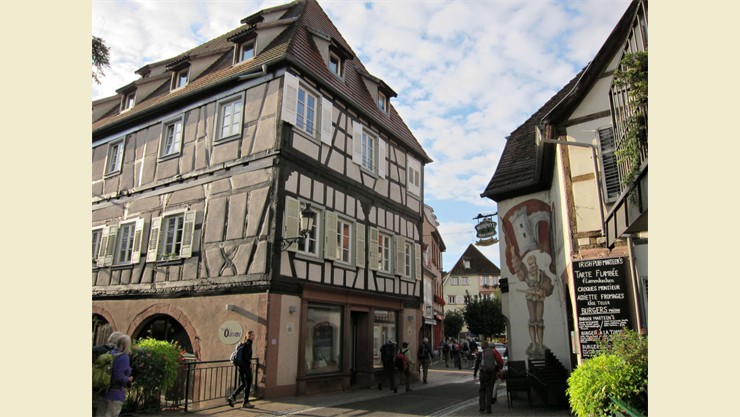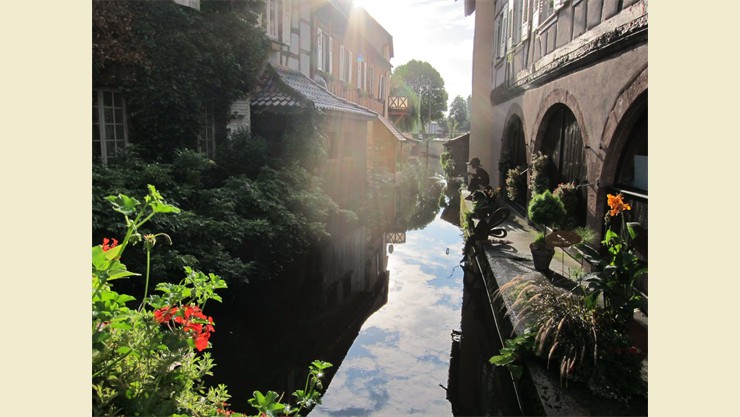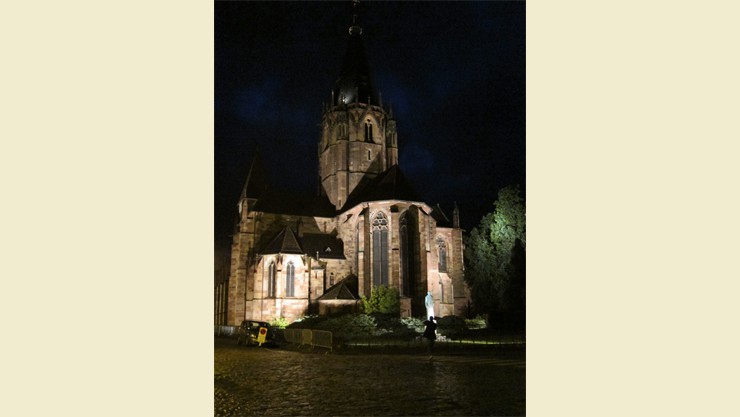
The Benedictine abbey in Wissembourg was founded as early as the 7th century and became the richest abbey in Alsace through donations of land. In 974, the abbey was elevated to the status of an imperial abbey. The monk Otfried of Weissenburg worked here in the 9th century. With his "Book of the Gospels", begun in 863 and completed in 871, Otfried wanted to prove that artistic poetry was also possible in the vernacular. The work, a rhymed, epic Gospel harmony in the South Rhine Franconian dialect, describes the life of Jesus in five books based on all four Gospels. Otfrid is considered the "progenitor of German literature". He introduced the Romance end rhyme instead of the Germanic staff rhyme. At the tithe barn, Place du Saumon, a relief shows Otfried reading the Gospels.
The town of Weissenburg developed on the Lauter River from a settlement around the monastery. It was a free imperial city from 1306-1697. It belonged to the ten-town alliance of Alsatian imperial towns.
The Romanesque monastery church was built in the 11th century. In the 13th century, the church was largely demolished and rebuilt in Gothic style. Only the Romanesque tower remained. The construction of a cloister was also begun. It is a pity it was never finished, because what you see is beautiful.
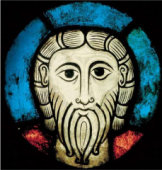
The serious-looking, frontally depicted head of the "Christ of Weissenburg" dates from around 1065 and is now in the Frauenhaus Museum (French: Musée de l'Œuvre Notre-Dame) in Strasbourg. It is a fragment of an older window from 1070. A copy is in the modern stained glass window of the chapter house, another hangs as a painting in the chancel (September 2015).
Pictures from the church Saint Peter and Paul
-
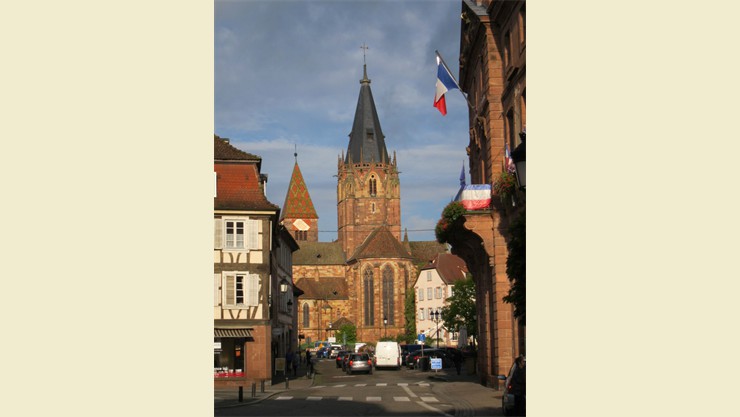 seen from the town hall
square
seen from the town hall
square -
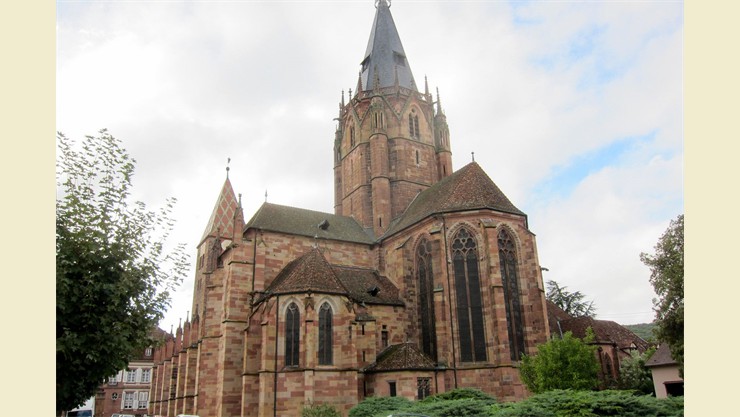
-
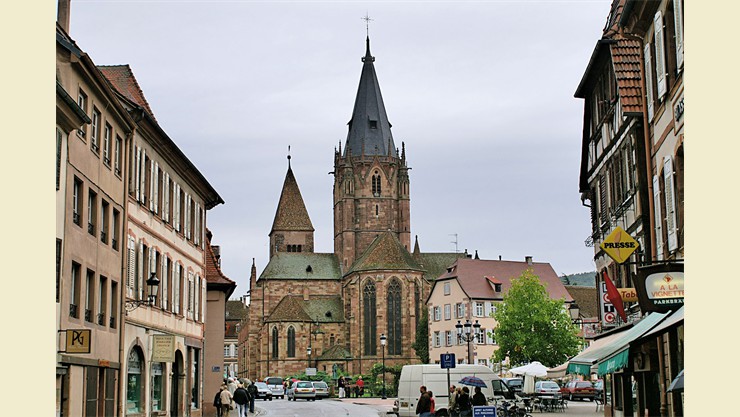
-
 with romanesque tower
with romanesque tower -
 Remainder of the early romanesque complex
Remainder of the early romanesque complex -
 All that remains of the old Weissenburg monastery is an unfinished Gothic cloister.
All that remains of the old Weissenburg monastery is an unfinished Gothic cloister. -
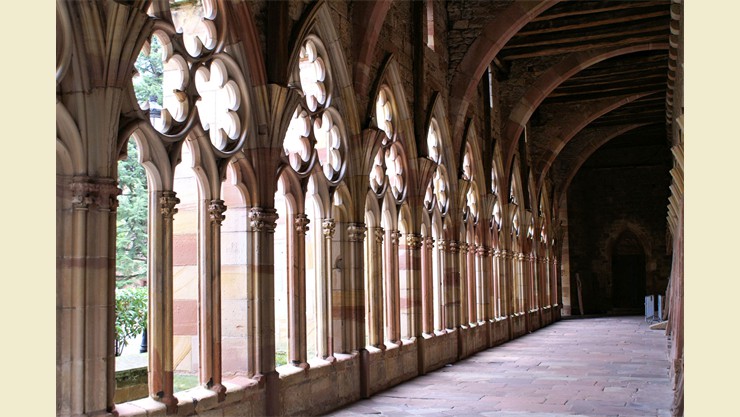
-
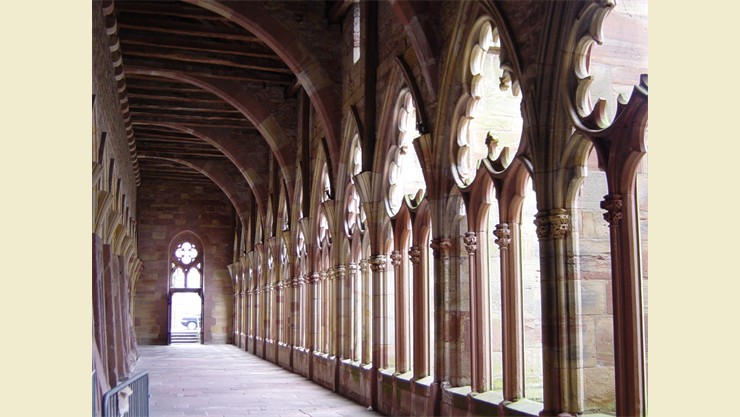
-
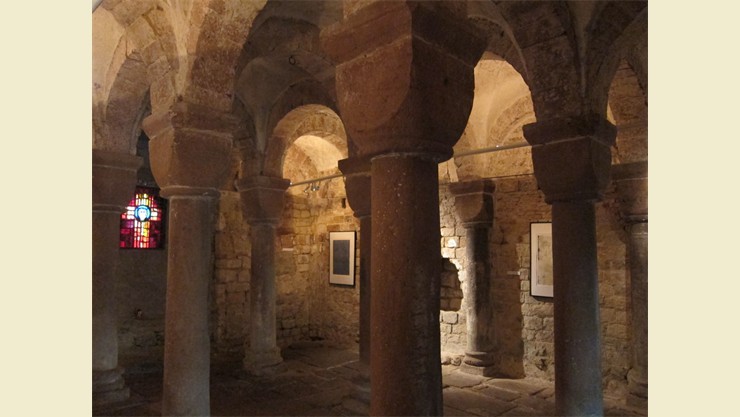 was later used as a chapel, today as a room for exhibitions.
was later used as a chapel, today as a room for exhibitions. -
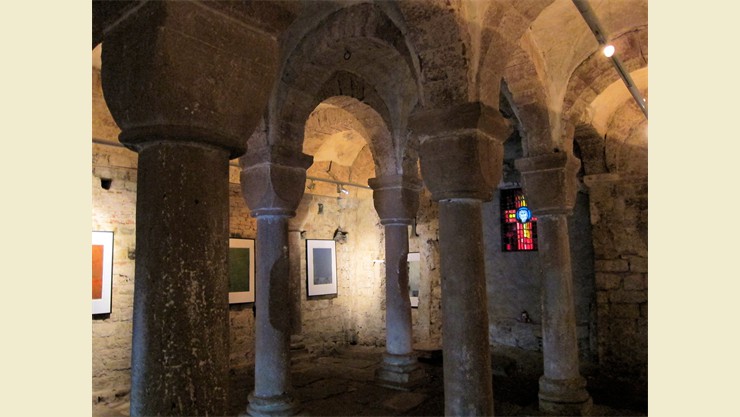 note the window
note the window -
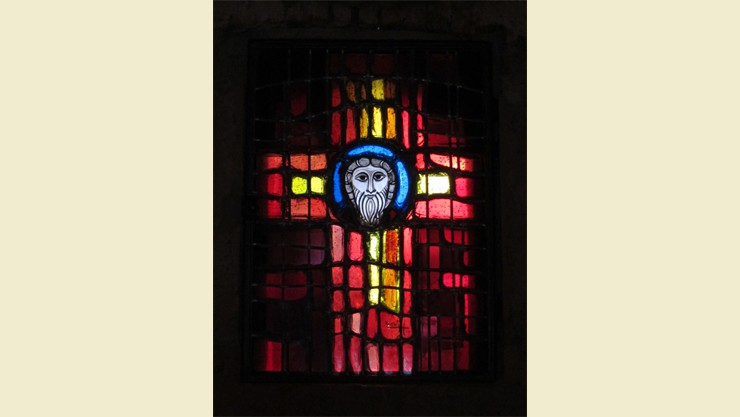 It is a copy of the stained-glass fragment "Christ of Weissenburg" from 1070.
It is a copy of the stained-glass fragment "Christ of Weissenburg" from 1070. -
 St. Peter and Paul
St. Peter and Paul -
 Stained glass windows from the 14th century and a copy of the Christ of Weissenburg
Stained glass windows from the 14th century and a copy of the Christ of Weissenburg -
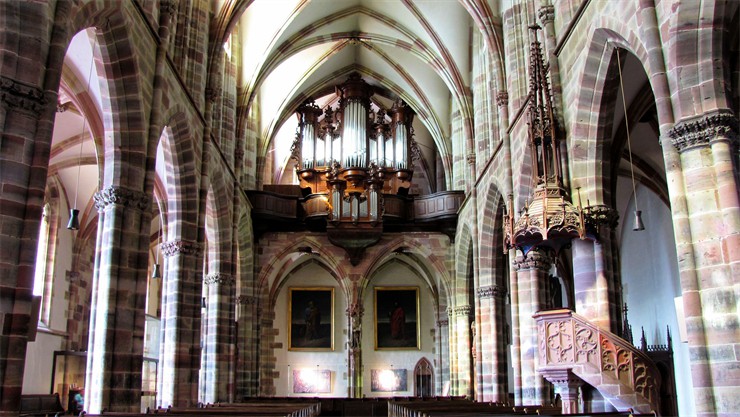 It was restored to its original state in 2010/12
It was restored to its original state in 2010/12 -
 originally dates from 1766 and is the work of the organ builder Louis Dubois
originally dates from 1766 and is the work of the organ builder Louis Dubois -
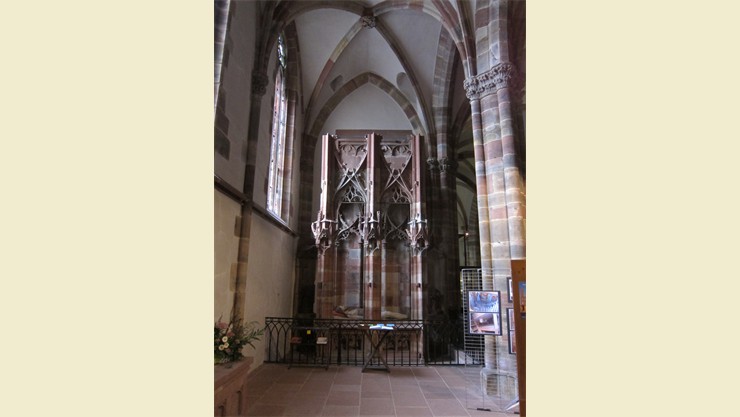
-
 Detail
Detail -
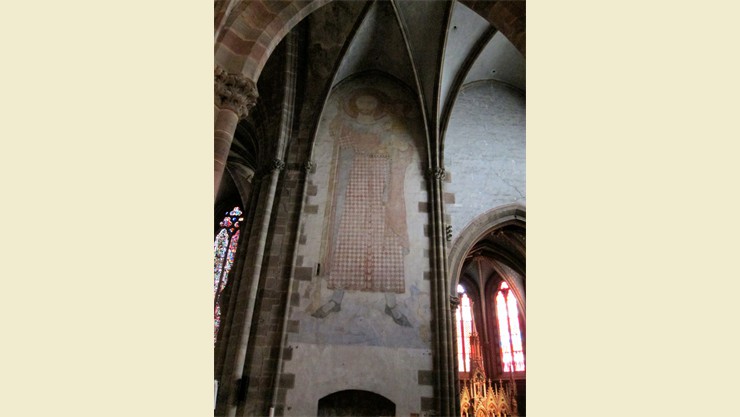 Fresco from the 14th century.
Fresco from the 14th century. -
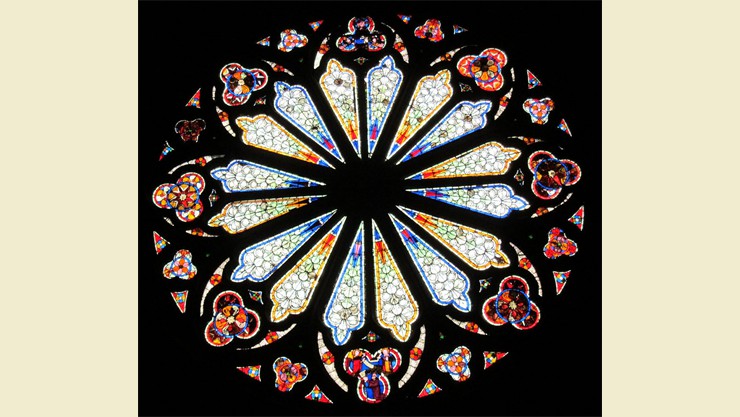 14. century
14. century
Pictures form the town at the Lauter
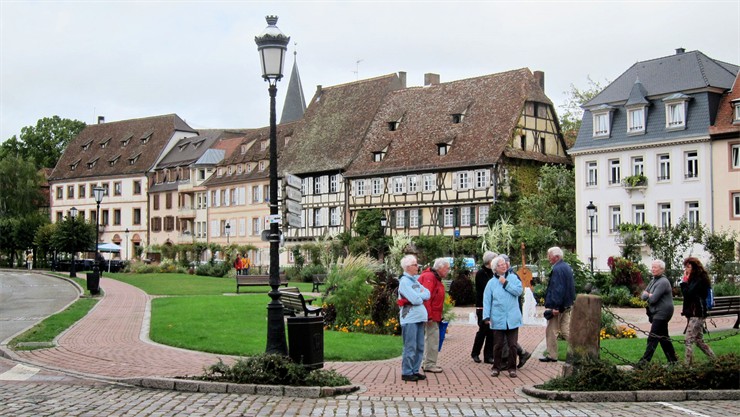 on Quai Anselmann
on Quai Anselmann at the Lauter
at the Lauter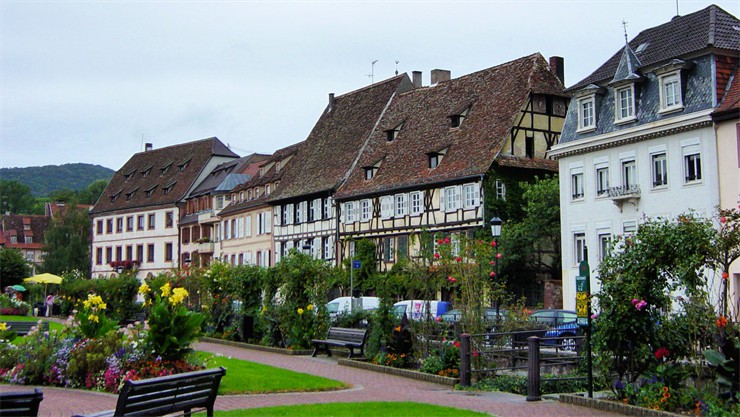 with its 15th and 16th century houses. One of its outstanding buildings is the Vogelsberger House.
with its 15th and 16th century houses. One of its outstanding buildings is the Vogelsberger House.-
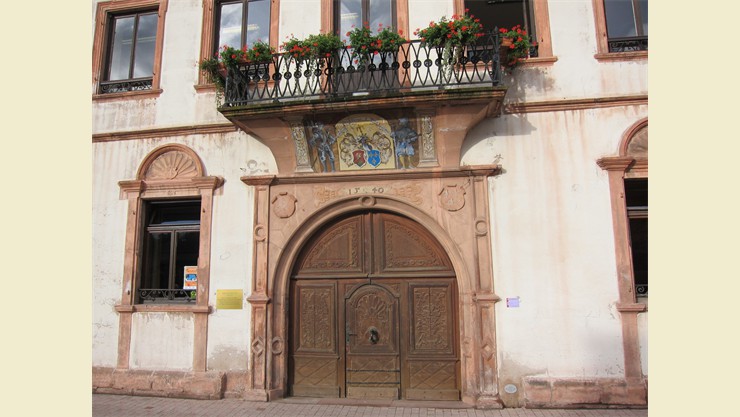 mit seinem schönen Renaissanceportal, über welchem eine Malerei Sébastien Vogelsberger und sein Wappen darstellt.
mit seinem schönen Renaissanceportal, über welchem eine Malerei Sébastien Vogelsberger und sein Wappen darstellt. 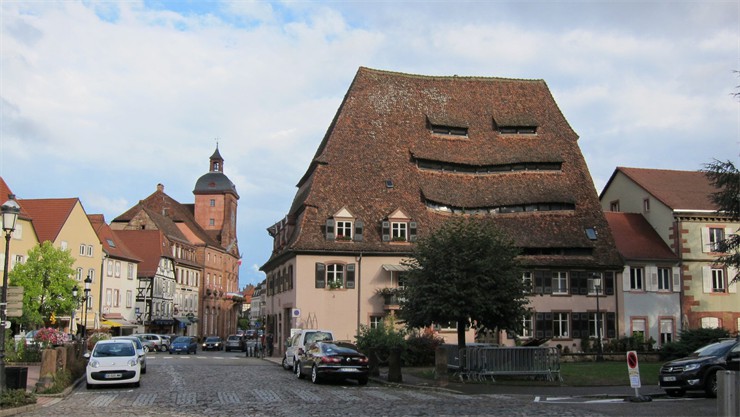 was built in 1450 as a hospital and served as a salt store and military hospital.
was built in 1450 as a hospital and served as a salt store and military hospital.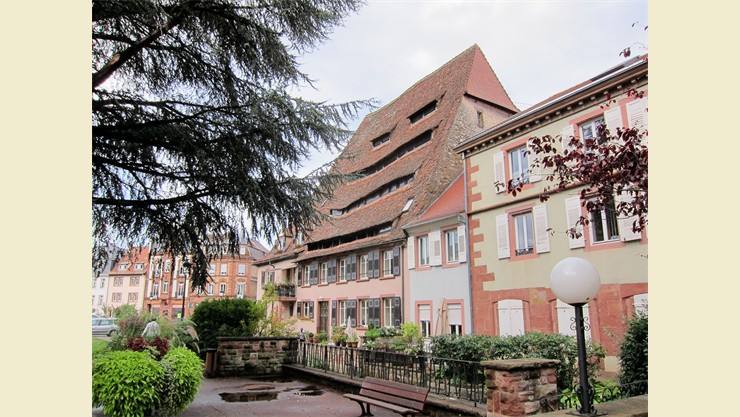


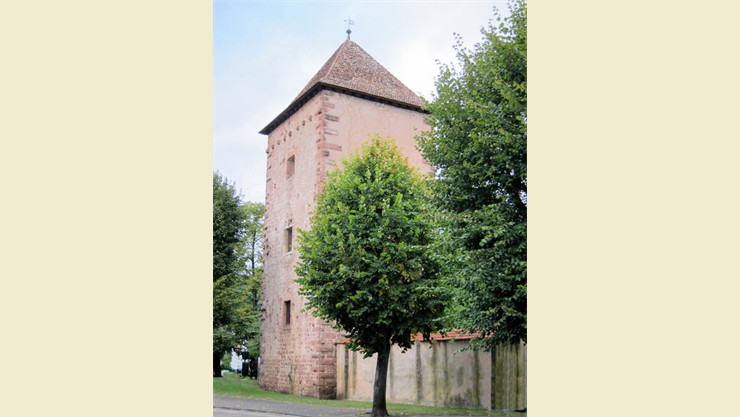 which belonged to the monastery wall.
which belonged to the monastery wall. 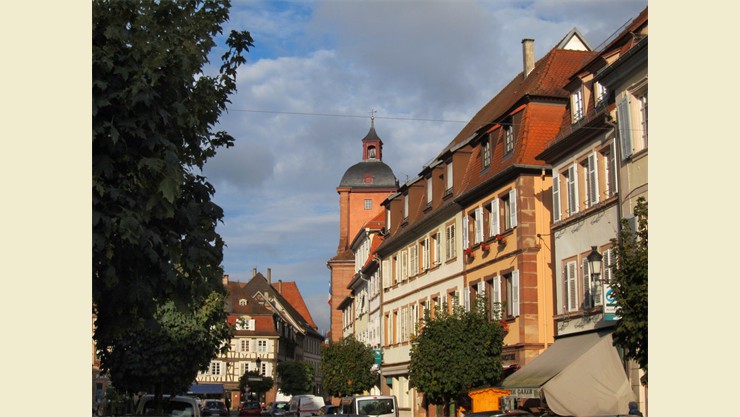 The town hall was built in pink sandstone in the middle of the 18th century.
The town hall was built in pink sandstone in the middle of the 18th century.-

